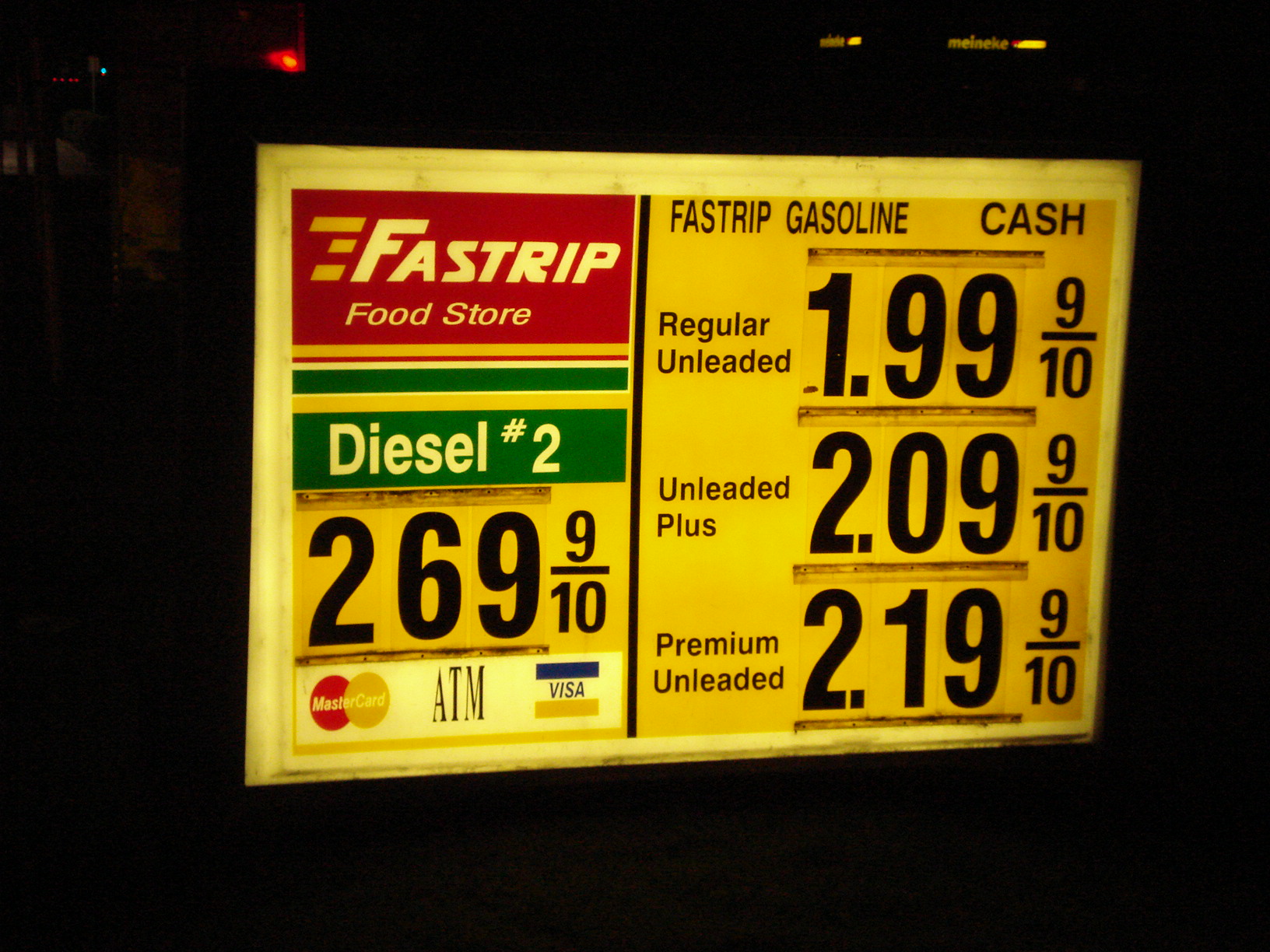By Jack Keller

The new year has brought new joy to filling up your car at the local gas station. On January 14th, Wall Street traded oil for $45.76 a barrel, which is a 55 percent slide since last July when the price per barrel was $100. The Energy Information Administration expects U.S. regular gasoline retail prices, which averaged $3.36 per gallon in 2014, to average $2.33 per gallon in 2015. In Georgia, the current average price for a gallon of gasoline is $2.00. According to AAA, more than 50 percent of U.S. gas stations are now selling gas for less than $2 per gallon.
The drastic drop in oil prices is partly a consequence of the United States’ increase in oil production. For the first time since 1986, new development in oil-shale technology provides states like Texas and North Dakota with the capability to produce more than nine million barrels of oil a day. An early November report from CNBC put daily U.S. oil production at 9.06 million barrels, surpassing the 28-year-old record of nine million barrels a day. Two month later, oil outputs have continued to reach astronomical heights. According to the Energy Information Administration, Russia, the United States, and Saudi Arabia generate 10.4 million, 11.1 million, and 11.7 million barrels of oil a day, respectively.
Exports from members of the Organization of Petroleum Exporting Countries are being displaced as Russia and the United States boost their outputs and add to the already-existing global oversupply. To counter the threat posed by American and Russian energy firms, Saudi Arabia’s OPEC representative Nassar al-Dossary warned attendees at a New York energy seminar of Saudi Arabia’s intentions to allow global energy prices to drop. Al-Dossary’s message signaled the end of Saudi Arabia’s decades-long economic orthodoxy of maintaining high oil prices. They have historically done so by limiting their own production.
According to the International Monetary Fund, the monarchy’s decision is backed by over $750 billion in foreign-exchange reserves. Controlling roughly 18 percent of the world’s proven oil reserves, the Saudi Kingdom sits on a comfortable throne. The oil kingdom also holds the hourglass. In theory, non-OPEC oil producers like United States, Russia, and Mexico will eventually wilt from low oil prices due to their limited reserves. Meanwhile, Saudi Arabia, the world’s largest oil exporter, can survive over two years of low prices. Consequently, Saudi Arabia and other OPEC members will be able to expand their already enormous share in the market and largely control the price for a barrel of oil.
Saudi Arabia’s strategy does not come as surprise to Jeff Currie, head of commodity research at Goldman Sachs (GS). In his interview with Bloomberg Business, the analyst talked about oil’s history over the past century. He explained the average length of an oil supply cycle is about 25 to 30 years. According to Currie, it has been almost 29 years since the oil bust of 1985-86, so the current oversupply and consequential drop in price is not unexpected. In the 1980s, oil prices collapsed to below $10 a barrel. At the time, the Saudis cut production and lost considerable market share due to other OPEC members’ insistence on pumping as much oil as possible.
The new year reveals a different challenge as the Kingdom has to keep all oil-producers—both OPEC and non-OPEC countries—in check. For American and Canadian tar sands competitors, an effective policy is difficult as central governments are not directly involved in the market. Rather, the North American market is comprised of hundreds of independent oil companies, scattered across the central plains. To curb their production, Saudi Arabia hopes to convince these companies that low oil prices are a result of the saturated market and that future investment is risky and unprofitable.
Learning from past experience, Saudi Arabia is now flooding the market with oil in order to maintain their market share. In an interview with Forbes, Professor F. Gregory Gause, a Saudi expert at Texas A&M University, said, “The most important thing for the Saudis is market share.” He further said, “[Saudi Arabia] will play chicken with other producers, whether Iranian or American shale producers, in order not to lose market share and the only way they will cut production is if they get an agreement with a broad array of OPEC and non-OPEC producers to take a fair amount of oil off the market.”
In light of Saudi Arabia’s market tampering, America needs to reevaluate its oil consumption. A major factor driving American oil production up is the country’s dependency on oil. America consumes more oil than anywhere else in the world. The EIA puts the United States as the world’s largest oil consumer at 19.4 million barrels of oil a day. This is almost double the world’s second largest consumer, China, at 10.1 million barrels a day. But China’s fuel consumption is due to its rapidly growing economy that is centered on exports to North America and Europe. Additionally, China is the world’s most populous country with almost 1.36 billion people, which is hardly comparable to the United State’s 320 million. According to EIA statistics, the United States consumes 20.7 percent of the world’s daily oil supply, despite its service-based economy and relatively small population.
With consumption numbers this high, Americans are dependent on both domestic and foreign sources of oil. It does not bode well for economic stability, particularly gas prices, when foreign producers drive prices down in order to threaten the financial security of domestic producers. Oil suppliers must be in harmony, not conflict, for there to be stability for American consumers.
Now that Saudi Arabia has began tapping into its deep oil reserves, things are not looking good for America’s domestic producers or consumers at the gas pump. U.S. shale producers’ shares recently took a significant hit. On Jan. 5, shares of Continental Resources stock fell by 12 percent. Transocean, a company engaged in offshore drilling, stock fell by another 7 percent, punctuating a 65 percent drop in the last year. When enough of these companies go out of business, the supply of oil will dry up and prices will start to rise again.
All things considered, the short-term gas prices point to a long-term plunge. Our nation’s crippling dependence on oil handicaps the future. It is not unreasonable to think that the Saudis will again set the price of a barrel of oil to well over a $115 once they have driven enough shale producers out of business. This means Americans will have to spend much more of their paychecks on gas.
American consumers need to ask a hard question: What really is the value of a drop of oil? It is much more complicated than the advertised price at a local gas station. If we don’t reign in our unsustainable habits, the future of gasoline looks grim indeed.


